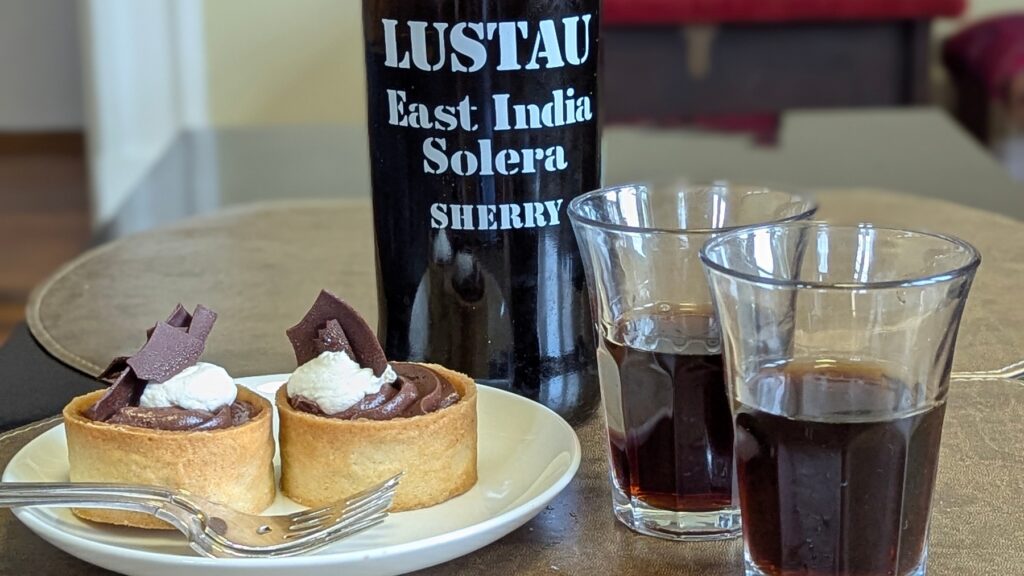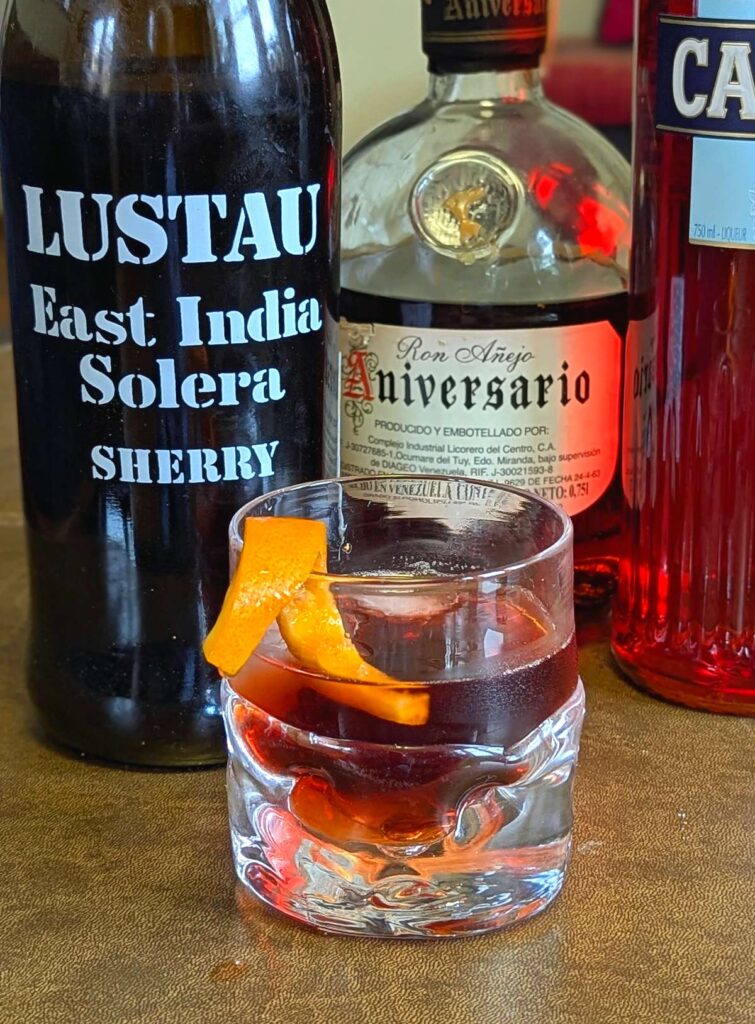
Spain celebrates Father’s Day as the feast of St. Joseph, March 19, which is the kickoff of spring. Here in North America, Father’s Day marks the transition into summer. We’ve chosen two stupendous wines from the Andalucían sherry producer, Lustau, for diametrically opposite approaches to sipping on a summer evening. It really comes down to whether your dad is a Manhattan or a Martini drinker. Either goes well with a Spanish snack plate of marcona almonds, potato chips, and slices of Manchego cheese.
How sweet it is
On the sweet side, we’ve picked the often overlooked cream sherry category. At Lustau, that’s East India Solera Sherry — a style designed to mimic historic sweet sherries aged at sea in casks that shuttled from Spain to East India to England. The style is based on Oloroso sherry — a very dark sherry of Palomino and Moscatel wine fortified early in its solera aging so that it picks up nutty tones and browning oxidation from the Galician oak barrels. At Lustau, the cellarmasters blend 12-year-old Oloroso with 12-year-old solera-aged Pedro Ximenez sherry. (Aged Pedro Ximenez is almost like drinking fig syrup.) The blend is then aged another 3 years in oak barrels in a 45-cask solera.
Lightly chilled, the resulting dark mahogany cream sherry has a complex flavor profile of dried fruit (prunes, raisins), toasted nuts, and faint petroleum overtones. (We’ve seen some critics call it ‶shoe polish,″ but the flavor is far more appealing than that.) A slightly raspy edge and acidity balance the intense sweetness. Think of it as a Manhattan on Spanish steroids. An excellent sweet drink on its own lightly chilled, it’s even better paired with some dark chocolate and a twist of orange rind. The Lustau East India Solera Sherry also makes a friendly cocktail mixer. Celebrity bartender/mixologist Jim Meehan uses it in a striking variation on the Negroni. See the recipe at the end of this post.

The dry refresh

Our dry choice is Vermut Lustau. As close as we can tell, It’s the first white vermouth produced in Jerez. Red vermut is endemic in Spain. Go to any vermutería in Spain and you’ll find immense barrels of the stuff. Traditionally, it was a way to preserve mediocre red wine with Mediterranean herbs, North African spices, cooked grape must, and extra alcohol. Red vermut tends to be sweet. Very sweet.
But Lustau’s white vermut is another creature altogether — the perfect cocktail-hour riposte to a steamy afternoon when the asphalt seems on the verge of melting and the buzz of cicadas drowns out the roar of urban traffic. The vermut is a blend of crisp dry fino sherry crafted from Palomino grapes with a more floral and sweeter Mostcatel wine. Gentian, wormwood, marjoram, and chamomile provide the herbal overtones. The finished vermut is elegant and clean with notes of citrus and yeast and a refreshing aftertaste. Chill it and sip straight up. Or drop a few ice cubes and an olive into a taller glass, pour on the vermut, and top with sparkling water and a twist of lemon. Summer heat begone!
East India Negoni

This is Jim Meehan’s take on using cream sherry in a Negroni, the modern classic that traditionally blends gin, Campari, and sweet Italian vermouth. This version substitutes dark aged rum (we use Aniversario Ron Añejo from Venezuela) for the gin and East India Solera for the vermouth.
INGREDIENTS
- 3/4 oz. Lustau East India Solera Sherry
- 2 oz. aged dark rum
- 3/4 oz. Campari
- orange twist
- large ice cube
Add sherry, rum, and Campari to a rocks glass. Add ice cube and stir for 30 seconds. Twist the orange peel over the cocktail and add the twist as a garnish.
